Dark store models of Ocado, Getir, Weezy, Jiwa, Gorillas, Zapp, Dija and ASAP cannot compete against a Snappy-powered independent convenience store, says King
Justin King is a little bit excited about Snappy Group. “I think it’s f***ing brilliant,” says the ex-Sainsbury’s CEO, of the fast-growing online and mobile technology platform. “In one leap it allows a corner shop to be as close to omnichannel as Tesco or Marks & Spencer’s are today.”
So confident is King in Snappy’s prospects, he’s investing a “significant” sum in the Dundee-based startup, via a Series A £12m fundraise that just kicked off, and is joining the board as a non-exec director, in a special adviser role to help it scale up.
Of course, there’s a delicious irony here in a former supermarket boss (and M&S non-exec director) helping independent shops to compete online. But Snappy Group isn’t just competing with the major mults, he’s at pains to point out.
It’s also involved in an “exciting new turf war” – the on demand convenience market – involving not only rapid delivery operators like Deliveroo and Just Eat, and Ocado’s Zoom, but a growing number of rival startups that have sprung up almost overnight since the pandemic, and are “trying to put convenience stores out of business”.
“You’ve got a whole bunch of money – hundreds of millions – backing these dark stores. I did a Google search and found six in the UK: Getir, Gorillas, Zapp, Weezy, Dija, Jiffy. [A seventh, ASAP, also launched this month.] Which I don’t get.”
So why is King backing Snappy to succeed over these other businesses – some already achieving eye-watering valuations?
In short, Snappy’s unique business model, which could mobilise and facilitate “40,000 independent corner shops at very low cost to do what most of them would love to be able to do if they could work out how to do it.”
That means using its existing infrastructure.
“All the assets, the shop, the people, the supply chain that backs it up, the ranging, serving a local community, knowing who your customers are already by name. All that infrastructure is there.
In contrast, the new dark stores have to start from scratch. “They are all out there looking for real estate for their dark stores. And it already exists. It’s called the corner shop. Inside the area they’re trying to cover, there may be 300 convenience stores selling 2,000 skus. So dark stores ain’t gonna win. It’s simple maths.”
In contrast, “the average corner shop, it’s a tardis in terms of its range and offer. It will have local suppliers, but it will also have big brands, from whatever symbol group or cash and carry it uses,” in a range based on the retailer’s knowledge of its customers that “may have been fine tuned over 30 or 40 years”.
What these corner shops have lacked is an online trading platform to help them compete cost-effectively. And that’s where, King believes, Snappy Shopper fits in.
“It’s the platform that solves the problem. Picking and delivery is still in the hands of the independent retailer. Which I believe is bob on. But we do all the route planning, what time to pick by, what time to leave by, how to combine orders. And the model from a cost point of view for the retailer is fabulous versus the alternatives. If it’s Deliveroo it’s probably 18%. This is 3%.”
“Show me a corner shop that doesn’t think they could pick 100 orders a week at an average of 10 items per orders with the labour they’ve already got”
It’s not quite as straightforward as that. There’s a subscription fee. And a credit card charge. But the numbers look encouraging to say the least. The average convenience store has a £7 average basket. With Snappy it is £27, claims Snappy. The biggest store – an early trialist in Snappy Group’s home town of Dundee is delivering over £2m in extra sales per annum, and two outlets are doing more than 50% delivery. But the main bedrock is 100ish orders per week.
“I don’t think there’s any aspirations among shopkeepers to be fully fledge online grocery operators. But you show me a corner shop that doesn’t think they could pick 100 orders a week at an average of 10 items per orders with the labour they’ve already got. Especially when it’s incremental.”
It’s quick to get started. “The way Snappy works, and there are 1500 signed up, is so simple: we download their catalogue tonight and they’re live tomorrow with their proposition, their range.”
That speed to market has been crucial in the pandemic.
Search is efficient too. “The customer goes on the app [or on their PC] and says ‘I want Mr Smith or Mr Patel in this corner shop to be my local store, that delivers to my home’, and gets to see the full catalogue, the actual stock – live.”
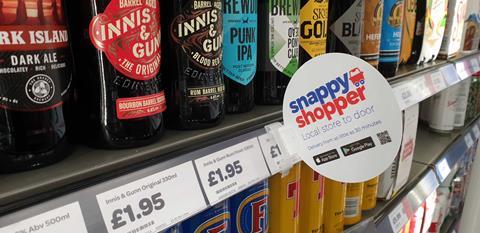
That’s not just a benefit for the customer. “We accept an order based on the fact we believe you’re managing your stock. If you’re not managing your stock, you’re accepting an order for something that’s not on your shelf. Which you don’t want. So it massively improves stock management.”
With a one-hour guarantee on delivery, Snappy isn’t as quick as its dark store rivals, which promise delivery times of as little as 10 minutes, but it’s more than quick enough, believes King. And crucially it’s cost-effective for the retailer.
“There’s some really, really, really clever software. It’s not fixed geo-zones. It’s based on live traffic mapping: the zone you’re offering pulses in and out based on the traffic. So if you’re in a postcode that’s on the wrong side of a main road that gets jammed up in rush hour, the customer won’t get offered a delivery. It means the Snappy service is getting 99% on-time delivery.”
The one-hour delivery guarantee also flattens the demand curve. “As the retailer you have a much flatter curve than you would otherwise get, because it pulses in and out. So the app is a worktool for the retailer.”
Hungrrr
It’s not the only string to Snappy Group’s bow: there’s also Hungrrr, a low-cost alternative to the likes of Deliveroo and Just Eat on the foodservice side.
“It’s slightly different, you don’t have the massive catalogue. It’s essentially a menu, though it has some sexy bolt-ons in terms of kitchen management and the like. And it’s a different model: the foodservice users pay a much bigger subscription because it’s a few orders but much higher gross margin.”
The cut is also significantly lower than the take if using “Just Eat and Deliveroo, the two bad boys of the playground in this space”.
“It puts the independent back in control. If you ever ask retailers and restaurants that use these two, it’s quite hard to find one with anything positive to say. They feel they have to do it but ultimately feel all the profit has gone to someone else. It’s a drug they’re trying to work out how to get off.”
As an investor this exposure to two key, fast-growth verticals is doubly attractive because it diversifies the risk, King believes. Snappy Group’s £60-65m valuation in the Series A fundraise is based on 50% of its annualising gross sales value, which were approaching £100m for the year ended March 2021, with 1,150 business partners signed up.

The valuation is “at the conservative end of the chain”, King believes. But he’s comfortable with that. The alternative metric, number of live customers, “can get a little bit squiffy”.
“Deliveroo comes out at £1,600 per customer, even at their deflated valuation. If you value Snappy on the basis of its 700,000 customers, it’s a lot less than that. So it’s a conservative number in the context of the space, but it’s still a small business, actual cash turnover will be less than £10m, and, of course, it’s loss-making, which is why they’re raising money.”
The investment will partly be used to help support retailers through additional marketing capabilities. But the types of marketing it anticipates are revealing. It doesn’t need to be flash because the shopkeeper already has a loyal customer base.
“Most of it is dead old fashioned. It’s a poster in the window of a shop. It’s leaflets to all the main postcodes. We’ll be doing a deal with a field marketing agency acting as a virtual sales force leafleting to local postcodes.”
But the main aim is recruitment and to achieve the scale that would make Snappy profitable. And the size of the prize in the case of Snappy Shopper is the 40,000 independent mom and pop stores.
“What’s really an endorsement is that the Coop is using it. Scotmid have chosen it as their go-to delivery solution. They’re hiring drivers, leasing vehicles. And actually the vehicles are co-branded with Snappy. Whereas the corner shops are running it using the normal diaspora of family and friends. But both can work.”
As a lifelong corporate, King, 60, has always been a sceptic when it comes to online, though he argues that his reputation is unjustified.
“I’m viewed as being bearish on home delivery. I personally don’t think I am. It’s just I am negative about some people’s ideas in this space.”
And he sees no inconsistency between his bullish take on Snappy and his views on the wider online distribution market.
“I’ve always been consistent in the view that supermarkets are the best distribution assets that have ever been invented. Supermarkets are just warehouse with customers in. And they’re the perfect asset for home delivery, as the last 12 months has shown with knobs on. Ocado have lost market share in the past 12 months because the supermarkets have been able to expand far faster.
Now King wants to prove that traditional, community-based, independently owned convenience stores can be equally effective in the fast-growing on demand convenience sector. As ever, his enthusiasm is dosed with a realism around a potential slowdown in online delivery growth.
“All of this has to come with a bit of a health warning. The last 12 months have been odd and some of the driving forces will go away,” says King.
But the prospects for the fast-emerging on demand convenience market are compelling as a customer proposition. And he’s also convinced the coronavirus will continue to have an impact.
“The last 12 months have been odd and some of the driving forces will go away”
“There will be a long tail on social distancing, legally and in human terms. In three years we will still be looking at signs saying no more than five people in the shop at any one time. We all used to laugh at Asian tourists wearing masks. No-one is laughing now. So large parts of our community will view home delivery as their go-to solution. But they want to do it from a local shop. It’s the milk they’ve run out of. It’s the note my mum used to leave out for the milkman.”
And there’s another old-fashioned precedent of which he has personal experience.
“I used to a paperboy. And I still remember the paperboys who used to cycle my grandmother’s groceries from Cullens in London. It’s back to that idea – but enabled in the sharpest technological way you could imagine.
“As you can probably tell I’m quite excited. Because someone’s going to win in this space. And I intend to help Snappy be the ones that win.”











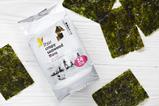

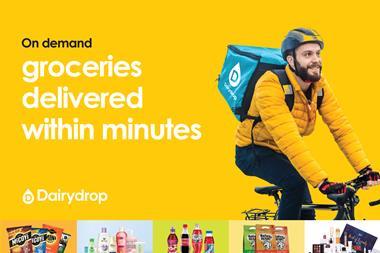







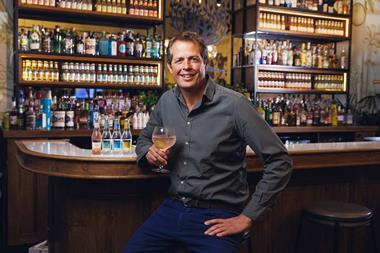
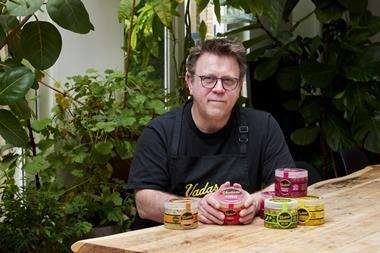
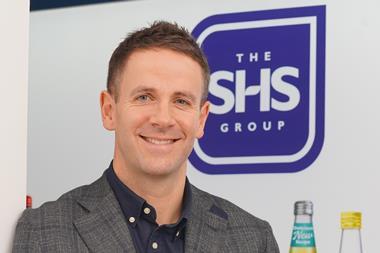

No comments yet